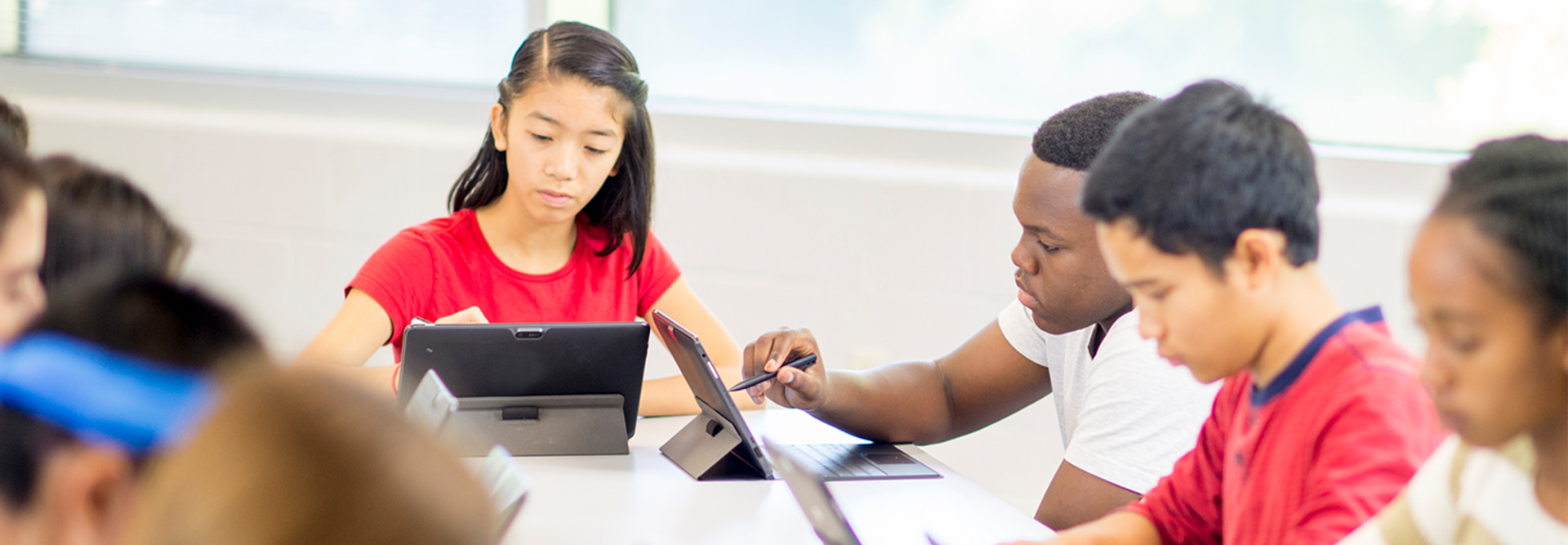How to Leverage Mainstream Technology to Boost Special Education
Federal laws such as the Individuals with Disabilities Education Act (IDEA), as well as state allocations and local funding, give schools access to resources to support students with special needs. But while funding opportunities exist, they are limited, which means schools must allocate what money they do receive strategically.
Assistive technology may be the best option. Not only do tools such as audiovisual assistance and voice amplification help students with special needs, they can eventually be transitioned for use in a modern learning environment to serve everyone.
“Word prediction is like that. Touch screens are like that. How many times have we known people that use their voice to control their environment?” said Christopher Bugaj, assistive technology trainer for Virginia’s Loudoun County Public Schools and author of The New Assistive Tech: Making Learning Awesome for All!, on a podcast. “Now it’s just something we do. It’s becoming more mainstream, and I think these things are becoming more built into just mainstream tools.”
Technology-driven accommodations support students who require additional help within the traditional classroom and allow them to function without drawing extra attention to their disabilities.
“You may think of assistive technology as this niche thing … but inclusive is the hot topic right now,” said Bugaj. “If you designed with people of all varying abilities in mind, you have a wider market base, we touched new people, it’s more inclusive for everybody — you are providing a service to the world.”
Many Devices Include Assistive Technology Tools
Personalized learning is a core tenant of the modern learning environment, encouraging many schools to provide students with their own devices.
For schools considering (or planning an upgrade to) a one-to-one device initiative, there are Chromebook and tablet options that incorporate assistive features.
Students who are blind or dyslexic, or have another diagnosis that impairs their reading ability, can benefit from devices such as Google Chromebooks, which come with audiovisual assistance.
The select-to-speak option lets students, or their aides, highlight blocks of text, which the device then reads aloud to the student.
Students can also “log into any device running Chrome and enjoy the same accessibility settings and experience without having to go through another onerous set-up process,” Naveen Viswanatha, lead product manager for Chromebooks for Education, told the Center for Digital Education.
Similarly, Microsoft’s Surface Pro is loaded with assistive technology, including text-to-speech software, word prediction and settings that allow screens to be adjusted for students with epilepsy.
“Products we used to buy as a third-party [package] and install on the desktop now come in Windows 365,” Gordon Knopp, former technology director at Wyoming’s Laramie County School District 1, told EdScoop. “It really makes it a learning-rich environment for these kids who have extra needs.” (Knopp was named state CIO for Wyoming in February.)
Virtual Reality Headsets Support Personalized Engagement
Virtual and augmented reality is proving to be not only an effective engagement tool but also a way to help students with special needs acquire the social and academic skills they need to thrive in the classroom.
With mixed reality headsets, students who have trouble reading or paying attention can use programs such as Microsoft’s Immersive Reader. Using the headset, students can work through scanned text using highlighting tools, syllable differentiation and read-aloud software.
For students with autism, teachers can walk through simulated daily scenarios that help to facilitate various skills — from recognizing and reacting to others’ emotions to crossing the road — in a safe, virtual environment.
A major benefit is that lessons within a virtual environment are open only to the teacher and the student using the headset. This means students with special needs can engage in their own, specially designed lessons within the same modern learning environment as any other student.
Through integrations like these, K–12 schools can offer a modern classroom that supports the unique needs of every student.
This article is part of the "Connect IT: Bridging the Gap Between Education and Technology" series. Please join the discussion on Twitter by using the #ConnectIT hashtag.
![[title]Connect IT: Bridging the Gap Between Education and Technology [title]Connect IT: Bridging the Gap Between Education and Technology](http://www.edtechmagazine.com/k12/sites/default/files/articles/2014/05/connectit.jpg)









